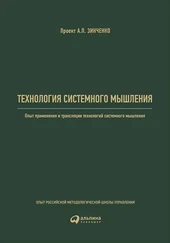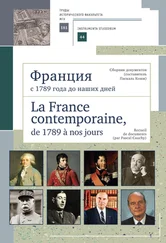Bliem, H., A. Danek. (1999). Direct evidence for a consistent dissociation between structural facial discrimination and facial individuation in prosopagnosia. Brain & Cognition , 40, 48–52.
Bloch, M. (1974). Symbols, song, dance, and features of articulation: Is religion an extreme form of traditional authority? European Journal of Sociology , 15, 55–81.
Bloch, M. (1982). Death, women and power. In M. Bloch, J. Parry (eds.), Death and the regeneration of life , 211–230. Cambridge: Cambridge University Press.
Bloch, M. (1992). Prey into hunter: The politics of religious experience . Cambridge: Cambridge University Press.
Bloch, M., J. Parry (eds.). (1982). Death and the regeneration of life . Cambridge: Cambridge University Press.
Bloom, P. (1998). Theories of artifact categorization. Cognition , 66, 87–93.
Bourguignon, E. (ed.). (1973). Religion, altered states of consciousness and social change . Columbus: Ohio State University Press.
Bowen, J. R. (1997). Religions in practice: An approach to the anthropology of religion . New York: Prentice Hall.
Boyd, R. (1988). Is the repeated prisoner's dilemma a good model of reciprocal altruism? Ethology & Sociobiology , 9(2–4), 211–222.
Boyd, R., P. J. Richerson. (1990). Culture and cooperation. In J. J. Mansbridge (ed.), Beyond self-interest , 111–132. Chicago: University of Chicago Press.
Boyd, R., P. J. Richerson. (1992). Punishment allows the evolution of cooperation (or anything else) in sizable groups. Ethology & Sociobiology , 13(3), 171–195.
Boyd, R., P. J. Richerson. (1995). Why does culture increase adaptability? Ethology & Sociobiology , 16(2), 125–143.
Boyer, P. (1994). Cognitive constraints on cultural representations: Natural ontologies and religious ideas. In L. A. Hirschfeld, S. Gelman (eds.), Mapping the mind: Domain-specificity in culture and cognition . New York: Cambridge University Press.
Boyer, P. (1998). Cognitive tracks of cultural inheritance: How evolved intuitive ontology governs cultural transmission. American Anthropologist , 100, 876–889.
Bradbury, J. W., S. L. Vehrencamp. (2000). Economic models of animal communication. Animal Behaviour , 59(2), 259–268.
Buchowski, M. (1997). The rational other . Poznan: Fundacji Humaniora.
Burkert, W. (1996). Creation of the sacred: Tracks of biology in early religions . Cambridge: Harvard University Press.
Burns, D. J. (1990). The generation effect: A test between single – and multifactor theories. Journal of Experimental Psychology: Learning, Memory, & Cognition , 16(6), 1060–1067.
Buss, D. (1989). Sex differences in human mate preferences: Evolutionary hypotheses tested in 37 cultures. Behavioral & Brain Sciences , 12, 1–49.
Buss, D. (1997). Human social motivation in evolutionary perspective: Grounding terror management theory. Psychological Inquiry , 8(1), 22–26.
Buss, D. (1999). Evolutionary psychology: The new science of the mind . Boston, MA: Allyn & Bacon.
Buss, D. (2000). The dangerous passion: Why jealousy is as necessary as love and sex . New York: Free Press.
Byrne, R. W., A. Whiten (eds.). (1988). Machiavellian intelligence: Social expertise and the evolution of intellect in monkeys, apes, and humans . Oxford, UK: Clarendon Press / Oxford University Press.
Cavalli-Sforza, L. L., M. W. Feldman. (1981). Cultural transmission and evolution: A quantitative approach . Princeton: Princeton University Press.
Cederroth, S., C. Corlin, J. Linstrom (eds.). (1988). On the meaning of death: Essays on mortuary rituals and eschatological beliefs . Uppsala: Almqvist & Wiksell.
Colas, E. (1998). Just checking: Scenes from the life of an obsessive-compulsive . New York: Pocket Books.
Coley, J. D., D. L. Medin, J. B. Proffitt, E. Lynch, S. Atran. (1999). Inductive reasoning in folkbiological thought. In D. L. Medin, S. Atran (eds.), Folkbiology , 205–232. Cambridge: MIT Press.
Cosmides, L. (1989). The logic of social exchange: Has natural selection shaped how humans reason? Studies with the Wason selection task. Cognition , 31, 187–276.
Cosmides, L., J. Tooby. (1989). Evolutionary psychology and the generation of culture: II. Case study: A computational theory of social exchange. Ethology & Sociobiology , 10(1–3), 51–97.
Cosmides, L., J. Tooby. (1992). Cognitive adaptations for social exchange. In J. H. Barkow, L. Cosmides, J. Tooby (eds.), The adapted mind: Evolutionary psychology and the generation of culture , 163–228. New York: Oxford University Press.
Craik, F. I. M., T. M. Moroz, M. Moscovitch, D. T. Stuss, G. Winocur, E. Tulving, S. Kapur. (1999). In search of the self: A PET study. Psychological Science , 10, 26–34.
Crawford, C. B., D. L. Krebs (eds.). (1998). Handbook of evolutionary psychology: Ideas, issues, and applications . Mahwah, NJ: Lawrence Erlbaum Associates.
Crawford, C. B., B. E. Salter, K. L. Jang. (1989). Human grief: Is its intensity related to the reproductive value of the deceased? Ethology & Sociobiology , 10(4), 297–307.
Cronk, L. (1999). That complex whole: Culture and the evolution of behavior . Boulder, CO: Westview Press.
Daly, M., M. Wilson. (1988). Homicide . New York: Aldine.
Daniel, S. B. (1983). Tool box approach of the Tamil to the issues of moral responsibility and human destiny. In C. F. Keyes and E. V. Daniel (eds.), Karma: An anthropological inquiry , 28–62. Berkeley and Los Angeles: University of California Press.
Davidson, I., W. Noble. (1989). The archaeology of perception: Traces of depiction and language. Current Anthropology , 30, 125–155.
Davies, J. (1999). Death, burial and rebirth in the religions of antiquity (Religion in the first Christian centuries) . London: Routledge.
Dawkins, R. (1976). The selfish gene . New York: Oxford University Press.
Decety, J. (1996). The neurophysiological basis of motor imagery. Behavioural Brain Research , 77(1–2), 45–52.
Decety, J., J. Grezes. (1999). Neural mechanisms subserving the perception of human actions. Trends in Cognitive Sciences , 3, 172–178.
DeFrancis, J. (1989). Visible speech: The diverse oneness of writing systems . Honolulu: University of Hawaii Press.
Dennett, D. C., P. Weiner. (1991). Consciousness explained . Boston, MA: Little, Brown and Co.
De Renzi, E., G. di Pellegrino. (1998). Prosopagnosia and alexia without object agnosia. Cortex , 34, 403–415.
Dissanayake, E. (1992). Homo aestheticus: Where art comes from and why . New York: Free Press.
Donald, M. (1991). Origins of the modern mind . Cambridge: Harvard University Press.
Dulaney, S., A. P. Fiske. (1994). Cultural rituals and obsessive-compulsive disorder: Is there a common psychological mechanism? Ethos , 22(3), 243–283.
Dumont, L. (1959). On the different aspects or levels of Hinduism. Contributions to Indian Sociology , 3, 40–54.
Durham, W. H. (1991). Coevolution: Genes, cultures and human diversity . Stanford: Stanford University Press.
Edelstyn, N. M. J., F. Oyebode. (1999). A review of the phenomenology and cognitive neuropsychological origins of the Capgras syndrome. International Journal of Geriatric Psychiatry , 14(1), 48–59.
Eisen, J. L., K. Phillips, S. A. Rasmussen. (1999). Obsessions and delusions: The relationship between obsessive-compulsive disorder and the psychotic disorders. Psychiatric Annals , 29, 515–522.
Читать дальше
Конец ознакомительного отрывка
Купить книгу






![Паскаль Буайе - Анатомия человеческих сообществ [Как сознание определяет наше бытие] [litres]](/books/406575/paskal-buaje-anatomiya-chelovecheskih-soobchestv-kak-thumb.webp)

![Вера Глушкова - Смоленская земля [Природа. История. Экономика. Культура. Достопримечательности. Религиозные центры] [litres]](/books/409035/vera-glushkova-smolenskaya-zemlya-priroda-istoriya-thumb.webp)



